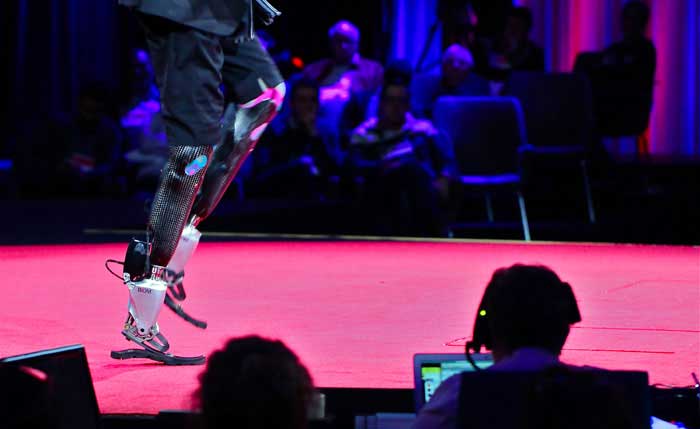It is doubtful there's a single person on the planet who's never heard of Oscar Pistorius, but most of them would have only heard of him for him being tried for murder. Long before that he took court action for the right to run alongside nondisabled athletes at the Olympic Games. His name that is generally used by the media is the Blade Runner, he has that name because he has no lower legs, he wears prosthetic blades but now a lot of scientists are starting to say that the wearing of such technologically advanced equipment is going to make it almost impossible for an athlete not wearing such devices to keep up, it hasn't happened yet but they are saying it is inevitable.
Surprisingly Oscar Pistorius was a sprinter and even though he competed successfully at the Olympics he failed to medal which is currently where most of the technology is at. The scientists expect and are already seeing that this kind of technology will mostly be used in distance or endurance events because simply put having even half a leg that can never get tired or sore or injured is a massive advantage so if you like Oscar Pistorius and had two of them then your advantage is doubled. It has come as a huge surprise to a lot of disabled athletes using these types of devices that the engineers who actually design them are the first group of people who are suggesting that some new guidelines be set up to keep prosthetic leg users in particular honest.
Bruce Dyer heads up research at Bournemouth University's design and engineering department, he is a prize-winning prosthetics designer and has been running a study to determine a way to analyze the use of lower limb running prosthesis in competitions for disabled athletes. He knew it would be easy but said “it's an almost impossible problem to deal with, but we can't ignore it either”, because the field of prosthetics is advancing incredibly fast as each new technology arrives, he said it's very difficult just to quantify what is even available let alone regulated it. It has only been about 25 years since prosthetic design has evolved to be anything more than comfortable for the wearer.
To start his study Dyer looked at the performance data from the men's 100 m sprint event at the Paralympic games between 1976 and 2012, he used this data as a way of establishing how far prosthetic technology had come in that time. When comparing the data available it actually shows there have been consistent improvements in performance across that timeline. The next phase of the research involved trying to come up with a consensus on how prosthetics should be used by disabled runners. To do that he recruited an expert panel that included people who are designing, fitting and servicing the equipment athletes are using, they were even just spectators on this panel but there were also members of the governing bodies, academics and of course some disabled athletes themselves, the first question they were asked was what they actually thought about prosthetics in competition. The end result of all of this study was that the guidelines would have to allow the athlete to have what they called restored functionality instead of enhanced functionality.

